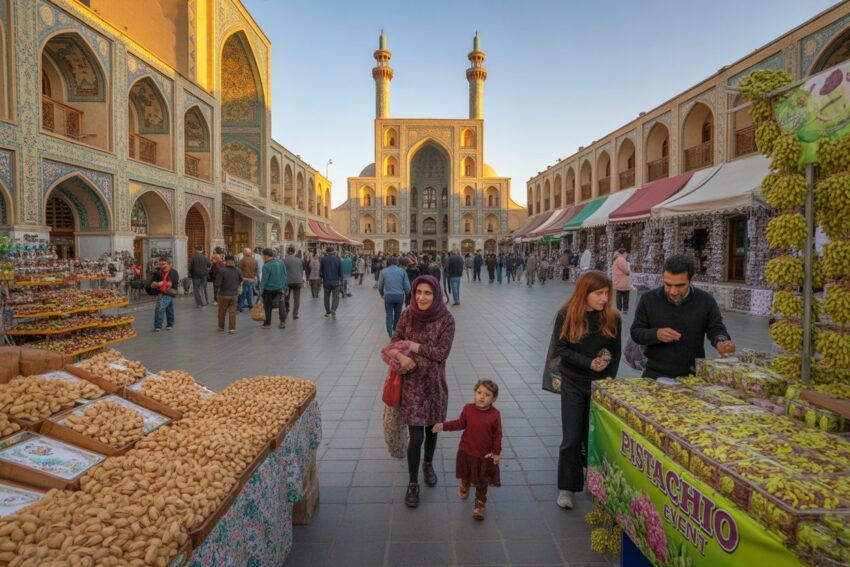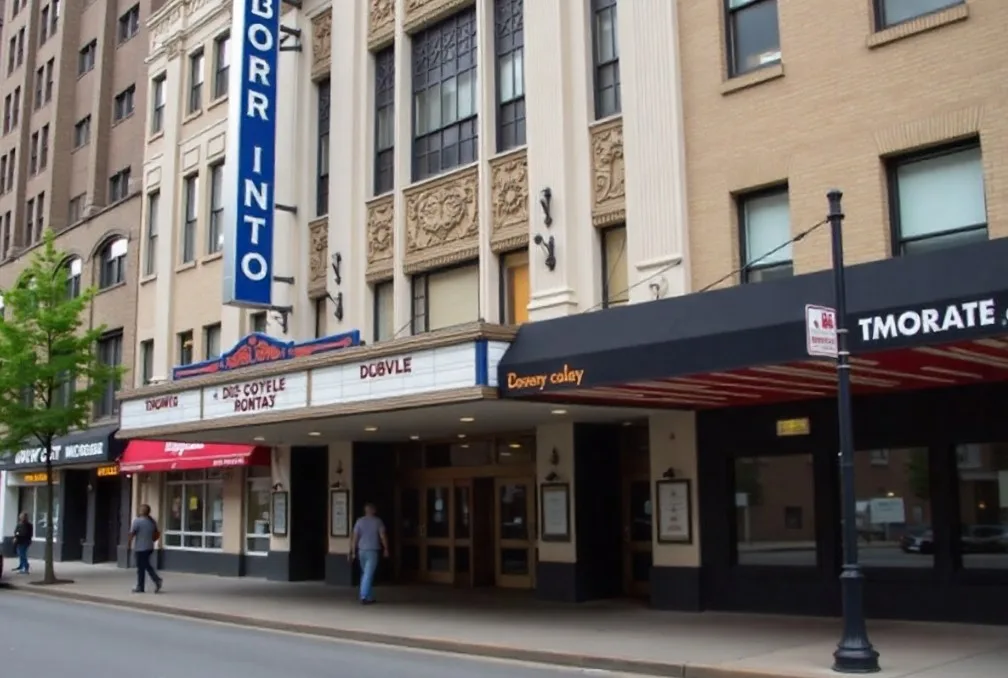Published on
August 16, 2025

The southeastern Iranian city of Zahedan, along with Kurin District, Sar Jangal, and nearby towns of Saravan and Mirjaveh, is preparing to host a landmark celebration of agriculture and culture: the Pistachio Tourism Festival, scheduled for Government Week (September 23–29, 2025).
This event will shine a light on the region’s farmers, artisans, and tour guides, honoring their role in shaping the local economy and cultural identity. More than a fair, the festival is designed as a tourism attraction, bringing together orchards, handicrafts, indigenous games, and rural traditions into a single destination experience.
The program will include orchard tours, live displays of pistachio harvesting, exhibitions of handmade crafts, and performances of traditional games, creating a lively atmosphere where visitors can experience the heritage of Sistan-Baluchestan first-hand. For farmers and artisans, it is a chance to gain recognition and to market their products directly to new audiences. For the community, it represents a path toward sustainable development, where agriculture and culture become key tourism drivers.
The Pistachio Tourism Festival also reflects the broader ambition of positioning southeastern Iran as an emerging rural tourism destination. With Zahedan’s location near the borders of Afghanistan and Pakistan, the festival has the potential to draw not only domestic travelers but also international visitors exploring regional routes.
This report explores the festival’s objectives, experiences, cultural significance, and broader impact. It paints a picture of how pistachios—often called Iran’s “green gold”—are more than a crop; they are a bridge between local livelihoods and a growing tourism industry that thrives on authenticity, community, and storytelling.
1. Event Overview: A Festival Rooted in Pistachio Heritage
The Pistachio Tourism Festival is designed as a week-long celebration of both agriculture and culture. Set against the pistachio orchards of Kurin District, the event will highlight the importance of pistachio farming to the region’s identity, while creating a platform for artisans and guides to showcase their skills.
Visitors will experience exhibitions that bring together three main elements:
- Agriculture: pistachio orchards, dried fruits, and farm products
- Culture: traditional games, performances, and rural storytelling
- Craftsmanship: embroidery, beadwork, pottery, and textiles
By combining these elements, the festival transforms farming landscapes into tourism landscapes, turning orchards and villages into open-air attractions.
2. Objectives and Local Impact
The festival is not just entertainment; it has clear development goals:
- Honoring Excellence: Recognizing farmers, artisans, and tour guides builds pride and motivation within the community.
- Economic Benefits: Local families earn directly by selling pistachios, handicrafts, and services to visitors.
- Cultural Preservation: By showcasing games and crafts, traditions are kept alive and shared with outsiders.
- Tourism Promotion: Positioning Kurin as a rural tourism destination encourages future visits beyond the festival.
For local people, these outcomes mean diversified income streams and a stronger sense of identity, linking their work to broader recognition.
3. The Setting: Geography and Climate of Kurin
Kurin District, with its small city Sar Jangal as administrative center, lies within Zahedan County. Surrounded by high plains and desert terrain, the district is shaped by a dry climate with hot summers and cooler winters. Irrigation systems allow for the cultivation of pistachio orchards, which thrive despite the arid environment.
The district’s location gives it strategic tourism potential:
- Zahedan serves as provincial capital and main gateway
- Saravan connects the area to eastern Sistan-Baluchestan
- Mirjaveh provides a cross-border link into Pakistan
This geography ensures that visitors can easily combine the festival with wider travel circuits across southeastern Iran.
4. Visitor Experience: What Tourists Will See and Do
For tourists, the festival promises an immersive experience that blends agriculture, culture, and leisure. Highlights include:
- Pistachio Orchard Tours: Walks among the trees, demonstrations of harvesting, and opportunities to taste pistachios fresh from the orchard
- Cultural Performances: Indigenous games and folk activities staged in open spaces, allowing visitors to both watch and participate
- Handicraft Markets: Stalls selling embroidered fabrics, pottery, beadwork, and coin-embroidered textiles
- Food Experiences: Local dishes and pistachio-based snacks prepared for visitors to sample
- Award Ceremonies: Public recognition of standout farmers and artisans, adding a ceremonial dimension to the event
Together, these activities transform the festival into a living museum of rural life, where every aspect is interactive and authentic.
5. Agritourism as a Development Path
The Kurin festival illustrates how agritourism can reshape rural economies:
- Low Investment Needs: Orchards, fields, and village squares provide natural venues requiring little new infrastructure
- Community Engagement: Families, youth, and cooperatives play direct roles in organizing and hosting visitors
- Direct Revenue Flows: Money spent by tourists goes to local households, reducing dependency on middlemen
- Destination Branding: Kurin gains visibility as a model for integrating agriculture with tourism
Such festivals show how farming can move beyond production to become an experience economy, drawing income from storytelling and hospitality.
6. Pistachios: Iran’s Green Gold
Iran is one of the world’s largest producers of pistachios, often referred to as the country’s “green gold”. The crop is cultivated across hundreds of thousands of hectares and provides livelihoods for millions of people.
In international markets, Iranian pistachios are valued for their quality, while domestically, they hold cultural significance—served in celebrations, weddings, and Nowruz traditions. By highlighting pistachios in a tourism festival, Kurin connects local orchards to global recognition, turning a cash crop into a tourism symbol.
7. Crafts and Cultural Heritage
Beyond agriculture, Kurin’s cultural wealth adds depth to the festival. Crafts such as embroidery, pottery, beadwork, and coin-adorned textiles are essential parts of local heritage. These items are both practical and decorative, reflecting the desert’s shapes, colors, and stories.
For artisans, the festival offers direct sales opportunities. For tourists, the crafts are tangible souvenirs, carrying the memory of a community and its traditions back home.
8. Broader Significance and Future Potential
The Pistachio Festival’s implications go far beyond one week of celebration:
- Empowerment: Farmers and artisans gain recognition, strengthening pride and confidence
- Rural Retention: With jobs linked to tourism, migration to cities may decline
- Regional Tourism: The event could anchor travel circuits across Sistan-Baluchestan, connecting Zahedan, Saravan, and Mirjaveh
- Replication: Other provinces can follow Kurin’s example—saffron festivals in Khorasan, pomegranate fairs in Yazd, grape harvest events in Fars
This shows the festival is not just local—it is a national model for agritourism growth.
9. Festival Structure and Organization
The event will be structured into distinct spaces:
- Exhibition Areas for pistachios, crafts, and local produce
- Performance Stages for games and cultural shows
- Recognition Halls for awarding farmers and artisans
- Interactive Corners where visitors can try crafts or join games
- Tour Routes leading through orchards and villages
Collaboration among local government offices, agricultural departments, sports authorities, and community members ensures that the festival is both authentic and sustainable.
Conclusion
The Pistachio Tourism Festival in Kurin District, Zahedan, is more than an agricultural fair—it is a strategic rural tourism event. By combining pistachio orchards, handicrafts, and cultural traditions, the festival offers an authentic experience that supports farmers, empowers artisans, and attracts visitors.
Taking place during Government Week (September 23–29, 2025), the festival positions southeastern Iran as an emerging tourism destination. It demonstrates how rural communities can transform agriculture into a sustainable tourism product, ensuring economic growth, cultural preservation, and community pride.
With orchards as its stage and people as its storytellers, the Pistachio Tourism Festival is planting the seeds of a new chapter in Iran’s tourism journey—one rooted in authenticity, resilience, and rural renewal.







